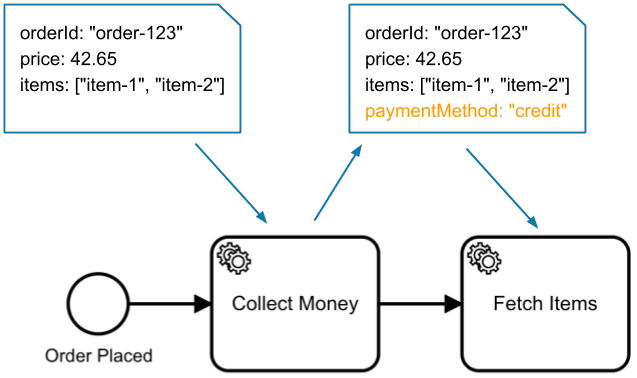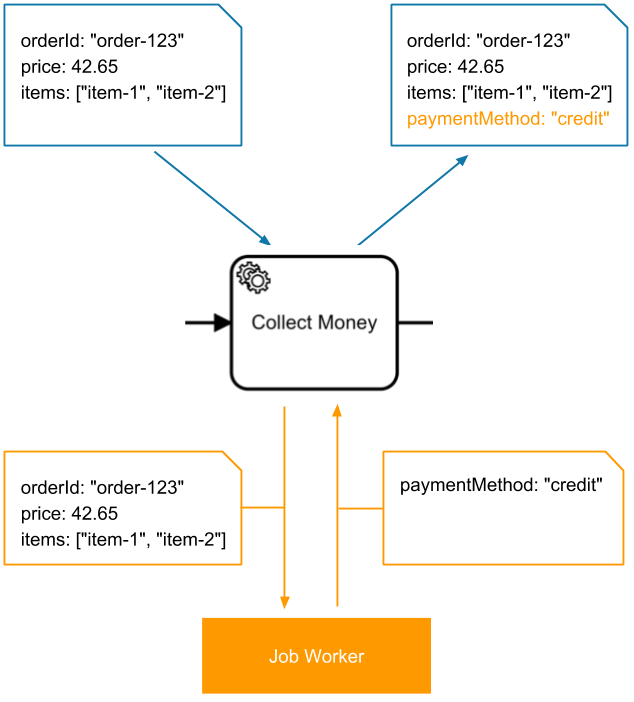Data flow
Every BPMN process instance can have one or more variables.
Variables are key-value-pairs and hold the contextual data of the process instance required by job workers to do their work, or to decide which sequence flows to take. They can be provided when a process instance is created, when a job is completed, and when a message is correlated.

Job workers
By default, a job worker gets all variables of a process instance; it can limit the data by providing a list of required variables as fetchVariables.
The worker uses the variables to do its work. When the work is done, it completes the job. If the result of the work is needed by follow-up tasks, the worker sets the variables while completing the job. These variables merge into the process instance.

If the job worker expects the variables in a different format or under different names, the variables can be transformed by defining input mappings in the process. Output mappings can be used to transform the job variables before merging them into the process instance.
Variable scopes vs. token-based data
A process can have concurrent paths; for example, when using a parallel gateway. When the execution reaches the parallel gateway, new tokens are created which execute the following paths concurrently.
Since the variables are part of the process instance and not of the token, they can be read globally from any token. If a token adds a variable or modifies the value of a variable, the changes are also visible to concurrent tokens.

The visibility of variables is defined by the variable scopes of the process.
Concurrency considerations
When multiple active activities exist in a process instance (i.e. there is a form of concurrent execution like usage of a parallel gateway, multiple outgoing sequence flows, or a parallel multi-instance marker), you may need to take extra care in dealing with variables. When variables are altered by one activity, it might also be accessed and altered by another at the same time. Race conditions can occur in such processes.
We recommend taking care when writing variables in a parallel flow. Make sure the variables are written to the correct variable scope using variable mappings and make sure to complete jobs and publish messages only with the minimum required variables.
These type of problems can be avoided by:
- Passing only updated variables
- Using output variable mappings to customize the variable propagation
- Using an embedded subprocess and input variable mappings to limit the visibility and propagation of variables